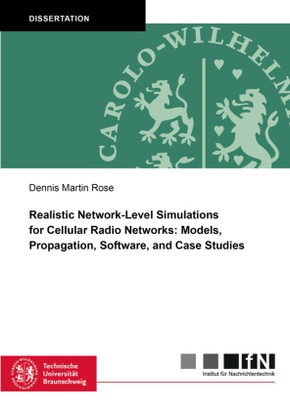Realistic Network-Level Simulations for Cellular Radio Networks: Models, Propagation, Software, and Case Studies - Dissertationsschrift
| Verlag | Shaker |
| Auflage | 2022 |
| Seiten | 236 |
| Format | 15,0 x 1,4 x 21,2 cm |
| Gewicht | 350 g |
| Artikeltyp | Englisches Buch |
| Reihe | Mitteilungen aus dem Institut für Nachrichtentechnik der Technischen Universität Braunschweig 71 |
| ISBN-10 | 3844088334 |
| EAN | 9783844088335 |
| Bestell-Nr | 84408833A |
The ever increasing complexity in mobile radio networks calls for increasingly sophisticated evaluation and planning methodologies. Within this thesis, a major evolution on the areas of models, propagation and software is achieved. New modelling capabilities allow to compose heterogeneous large-scale scenarios in a much more detailed and realistic way. The scenarios feature facets that are modelled for the first time, e.g. distinct individual mobility traces and full 3D building and interior plans for an entire city. Very detailed measurement campaigns have been carried out to gain insights into spatial propagation characteristics in outdoor-to-indoor, indoor-to-outdoor and in-house environments. Several propagation models and predictors have been developed and validated, which are capable of dealing with these highly detailed scenarios, resulting in a high-resolution 3D perspective of an outdoor and indoor mobile network. Furthermore, a novel 3D ray-launching method for the predi ction of time-variant scenarios caused by moving persons is introduced. This is particularly relevant for communication systems operating in indoor environments and at frequencies from 60 GHz up to the THz range. Finally, the simulation platform SiMoNe (Simulator for Mobile Networks) is developed, which is capable of performing computationally fast and efficient network-level simulations in these detailed scenarios and in a plethora of different configurations in parallel. SiMoNe handles unprecedented simulation scenarios and levels of detail. This is crucial for the development and evaluation of higher-level network algorithms. All in all, these new methods are suited to become part of the standard repertoire of modelling capabilities for mobile radio networks.

